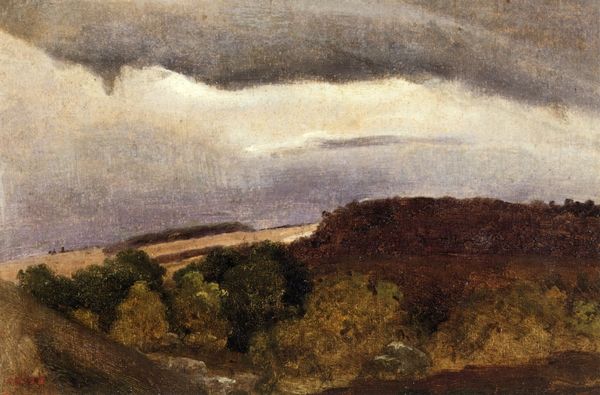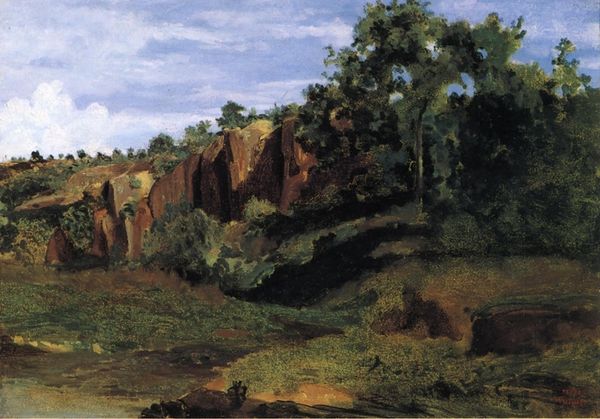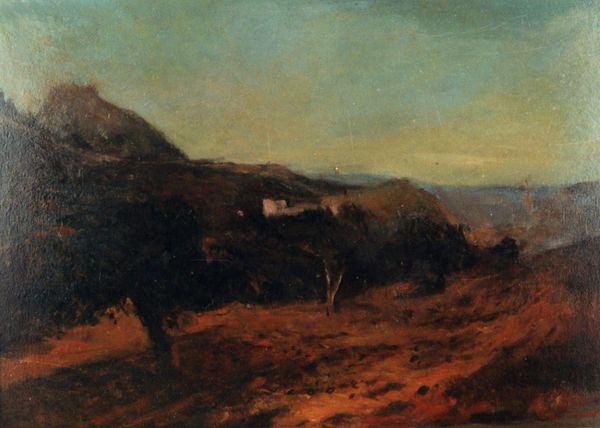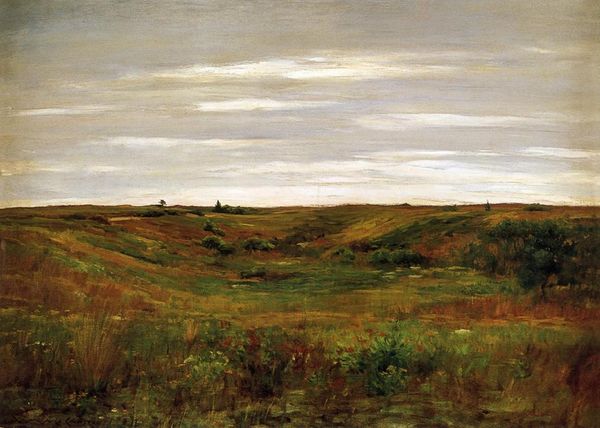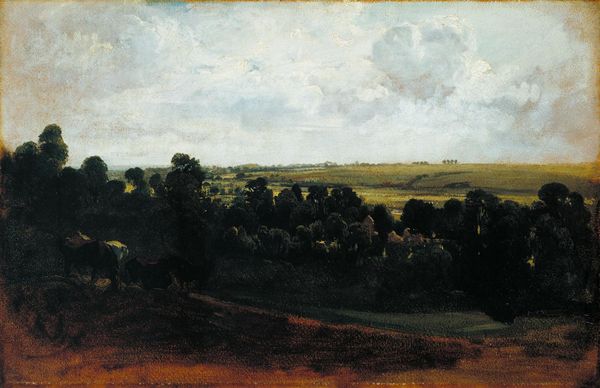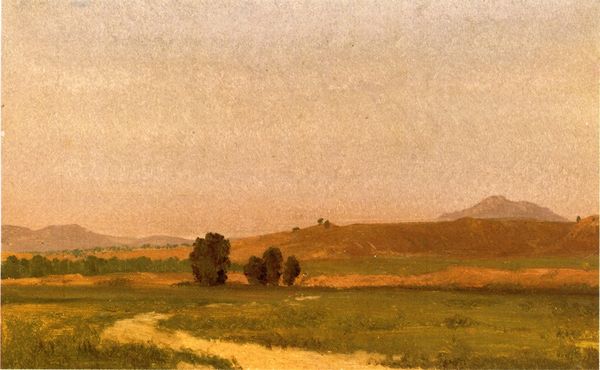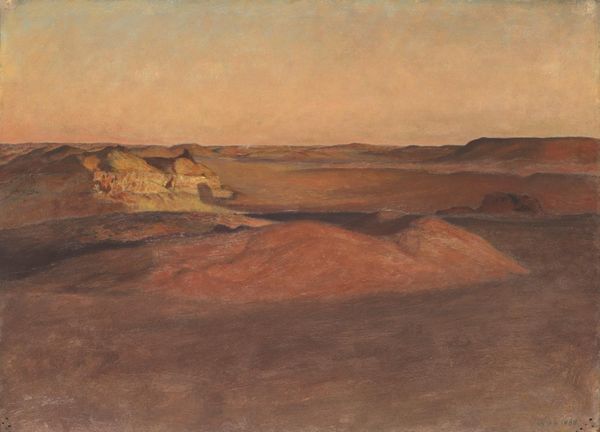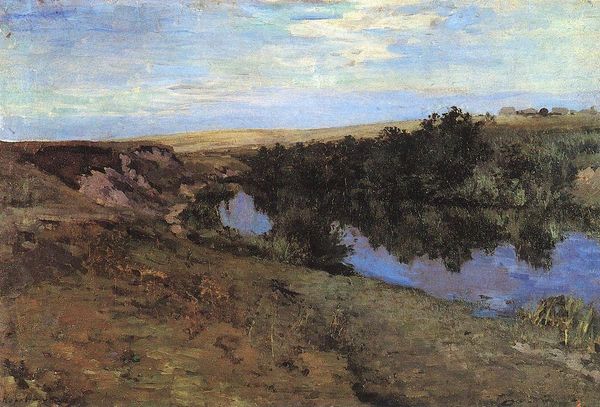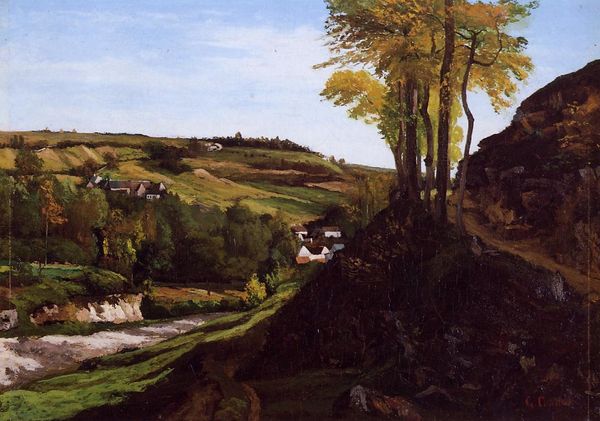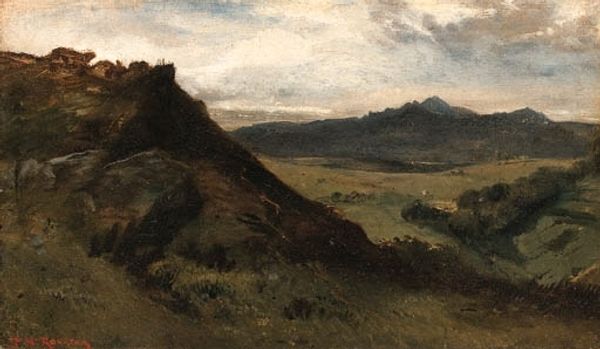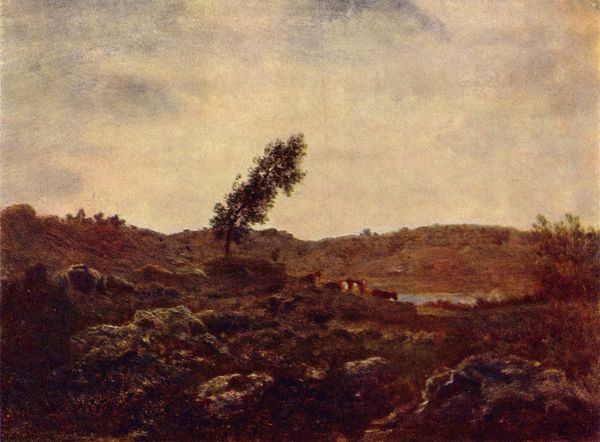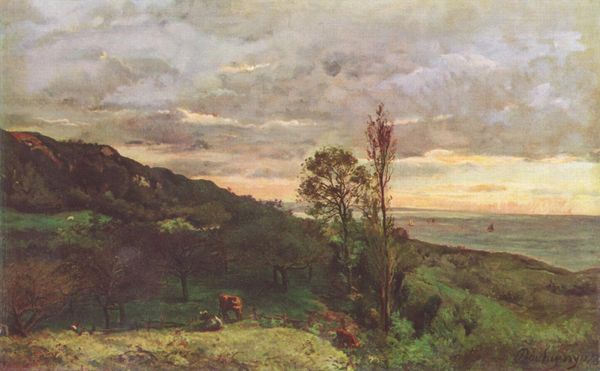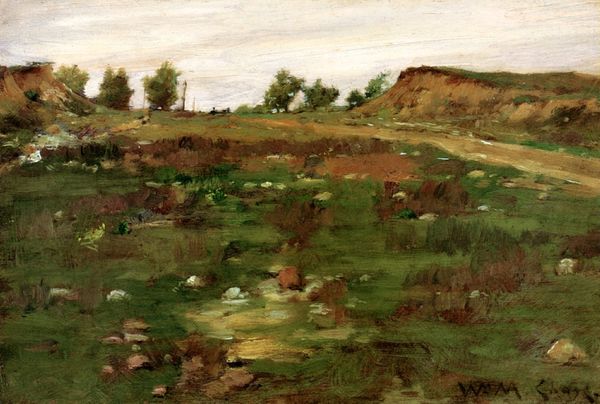
Mount Soracte 1827
0:00
0:00
jeanbaptistecamillecorot
Bavarian State Painting Collections, Munich, Germany
Dimensions: 22.4 x 37.8 cm
Copyright: Public domain
Curator: Jean-Baptiste-Camille Corot painted this small oil on canvas titled “Mount Soracte” in 1827. It’s a relatively early work, a study done en plein air during his time in Italy. Editor: There's a starkness to it. It's not unfriendly, but serious. The overall dark palette almost mutes any immediate charm, though that central light slash provides some contrast and interest. Curator: Indeed. Soracte held symbolic weight, frequently featured in classical Roman literature, embodying both natural beauty and spiritual significance. It was a site associated with Apollo, and rituals invoking protection. Corot likely understood its cultural value as a prominent feature visible from Rome. Editor: You can certainly sense a monumental feel, despite its modest scale. I think the restrained application of paint lends itself to a perceived reality—almost photographic, even though the tonal relationships are quite limited and deliberate. Observe how the dark foreground mass establishes depth through contrast. Curator: Yes, it departs quite significantly from more academic approaches of the time. He focused intently on observable reality, yet his choice of Soracte resonates with historical and literary memory. Later paintings of his have brighter light and feathery strokes. This earlier, careful method has a different feel. Editor: Do you think he’s presenting us with an unidealized view, more akin to empirical study? It has the quality of scientific documentation. No narrative seems obviously presented; perhaps the mountain *is* the narrative, its solidity representing enduring presence. Curator: Perhaps. Though a more Romantic reading would recognize the Sublime in such landscapes. The presence of the mountain in the distance does indeed provide a feeling of vastness and potential. Maybe Corot balanced that sublimity with observational reality. Editor: It certainly leaves room for interpretation. It's a satisfying image to contemplate on multiple levels—formal and historical. Curator: I find the blend of observation and historical resonance truly remarkable and representative of the time, and I find the contrast very beautiful and timeless.
Comments
No comments
Be the first to comment and join the conversation on the ultimate creative platform.
